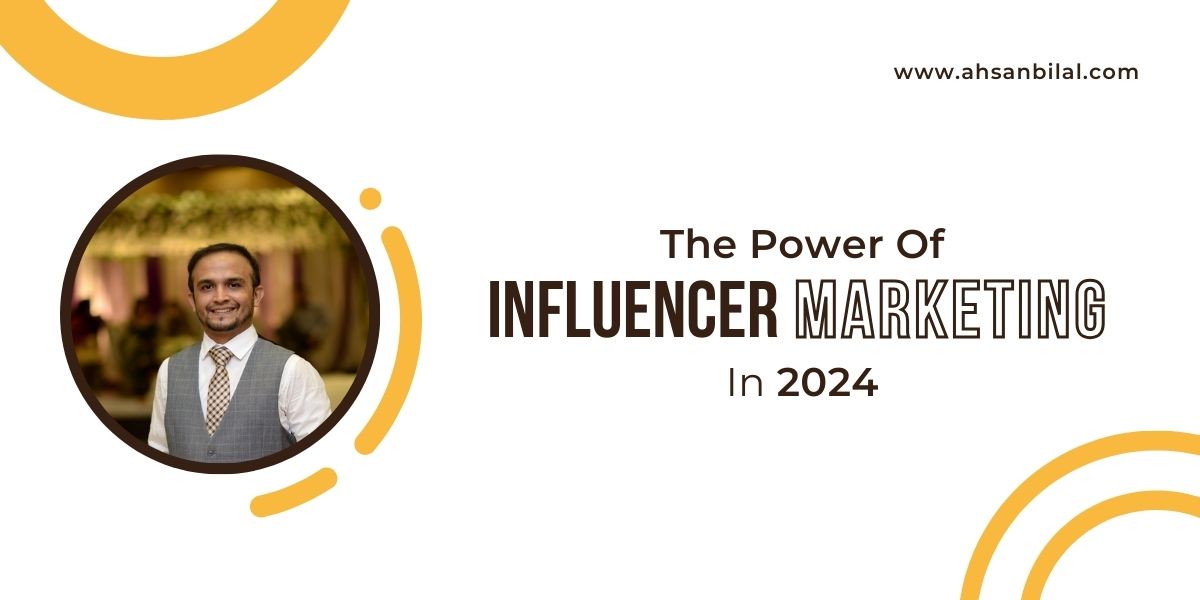The Power Of Influencer Marketing In 2024
In the realm of digital marketing, few strategies have proven as potent and adaptable as influencer marketing. As we step into 2024, the landscape of influencer marketing continues to evolve, presenting both new opportunities and challenges for brands striving to connect with their target audiences in authentic and impactful ways.
The Ever-Expanding Influence
In 2024, influencer marketing has solidified its position as a cornerstone of many brands’ marketing strategies. What started as a niche approach has blossomed into a multi-billion-dollar industry, with influencers spanning across various platforms and niches, from Instagram and YouTube to emerging platforms like TikTok and Clubhouse.
One of the most notable shifts in influencer marketing is the diversification of influencers themselves. While mega-influencers and celebrities still wield significant influence, micro and nano-influencers are gaining traction. These smaller-scale influencers often boast highly engaged, niche audiences, offering brands a more targeted and cost-effective means of reaching their desired demographic.
Authenticity Reigns Supreme
In 2024, authenticity has emerged as the currency of influence. With consumers becoming increasingly savvy and discerning, they crave genuine connections and transparency from the brands they engage with. As such, successful influencer partnerships are built on trust, with audiences responding favorably to content that feels authentic and aligned with an influencer’s personal brand.
Brands are increasingly shifting away from purely transactional relationships with influencers toward long-term collaborations rooted in mutual trust and shared values. By empowering influencers to create content that resonates with their audience organically, brands can foster deeper connections and drive genuine engagement.
Navigating New Frontiers
As the digital landscape continues to evolve, influencer marketing is venturing into new frontiers. The rise of virtual influencers, AI-generated personalities with curated personas, presents a novel avenue for brands to explore. While still in its infancy, virtual influencers offer unparalleled creative control and scalability, albeit with ethical considerations regarding transparency and authenticity.
Moreover, the metaverse—a virtual, interconnected universe—holds promise as a burgeoning space for influencer marketing. Brands are beginning to experiment with immersive experiences and virtual events hosted by influencers, tapping into the growing trend of digital escapism and virtual communities.
Data-Driven Decision Making
In 2024, data-driven insights are shaping influencer marketing strategies like never before. Advanced analytics tools enable brands to measure the effectiveness of influencer campaigns with precision, tracking key metrics such as engagement, reach, and ROI in real-time. By leveraging data-driven insights, brands can refine their approach, identify high-performing influencers, and optimize campaign performance for maximum impact.
Conclusion
In 2024, the power of influencer marketing continues to thrive and evolve, offering brands unparalleled opportunities to connect with consumers in meaningful ways. From micro-influencers to virtual personalities, the influencer landscape is more diverse and dynamic than ever before.
As brands navigate this ever-changing landscape, authenticity remains the guiding principle. By fostering genuine connections, embracing emerging technologies, and leveraging data-driven insights, brands can harness the full potential of influencer marketing to drive engagement, foster brand loyalty, and propel their business forward in 2024 and beyond.










